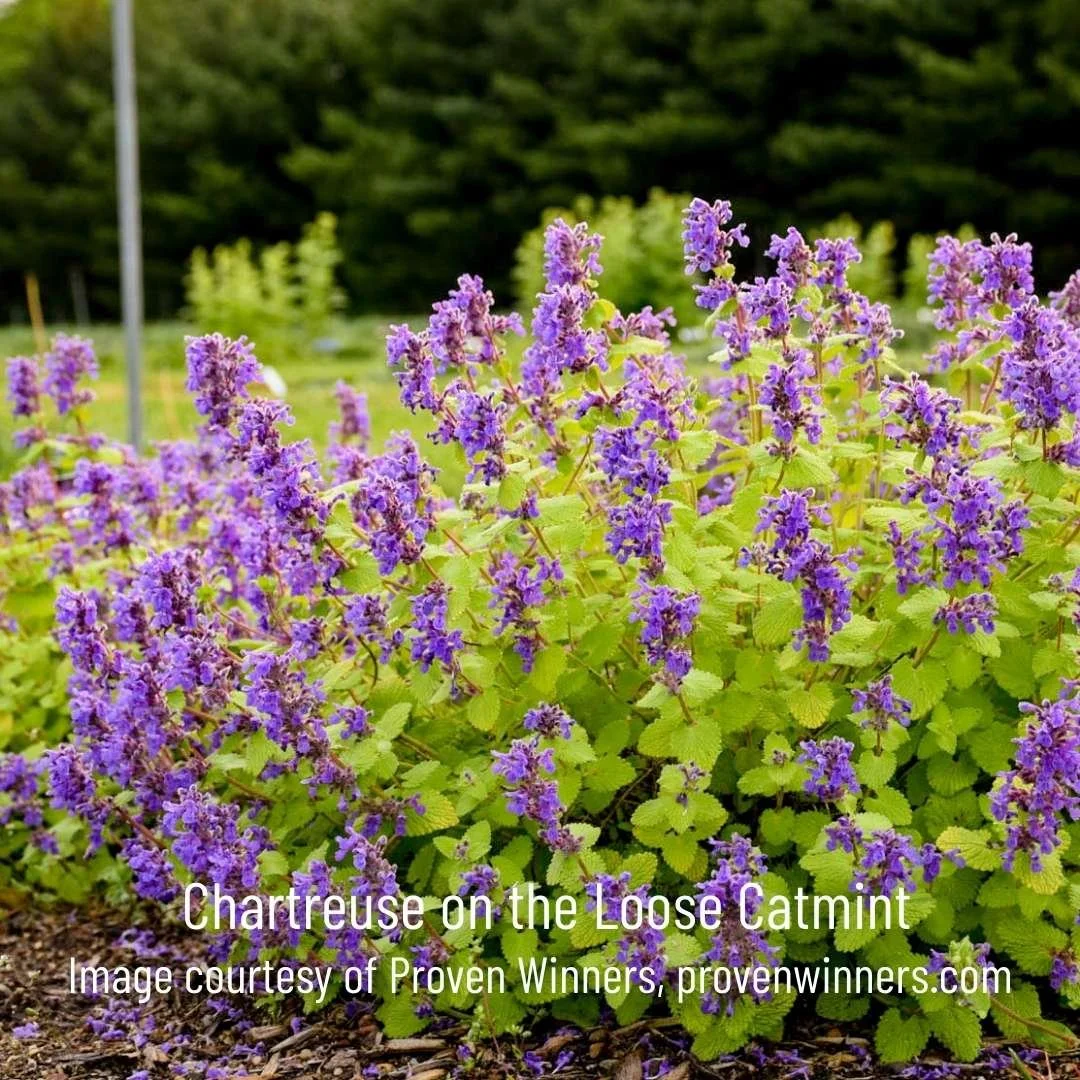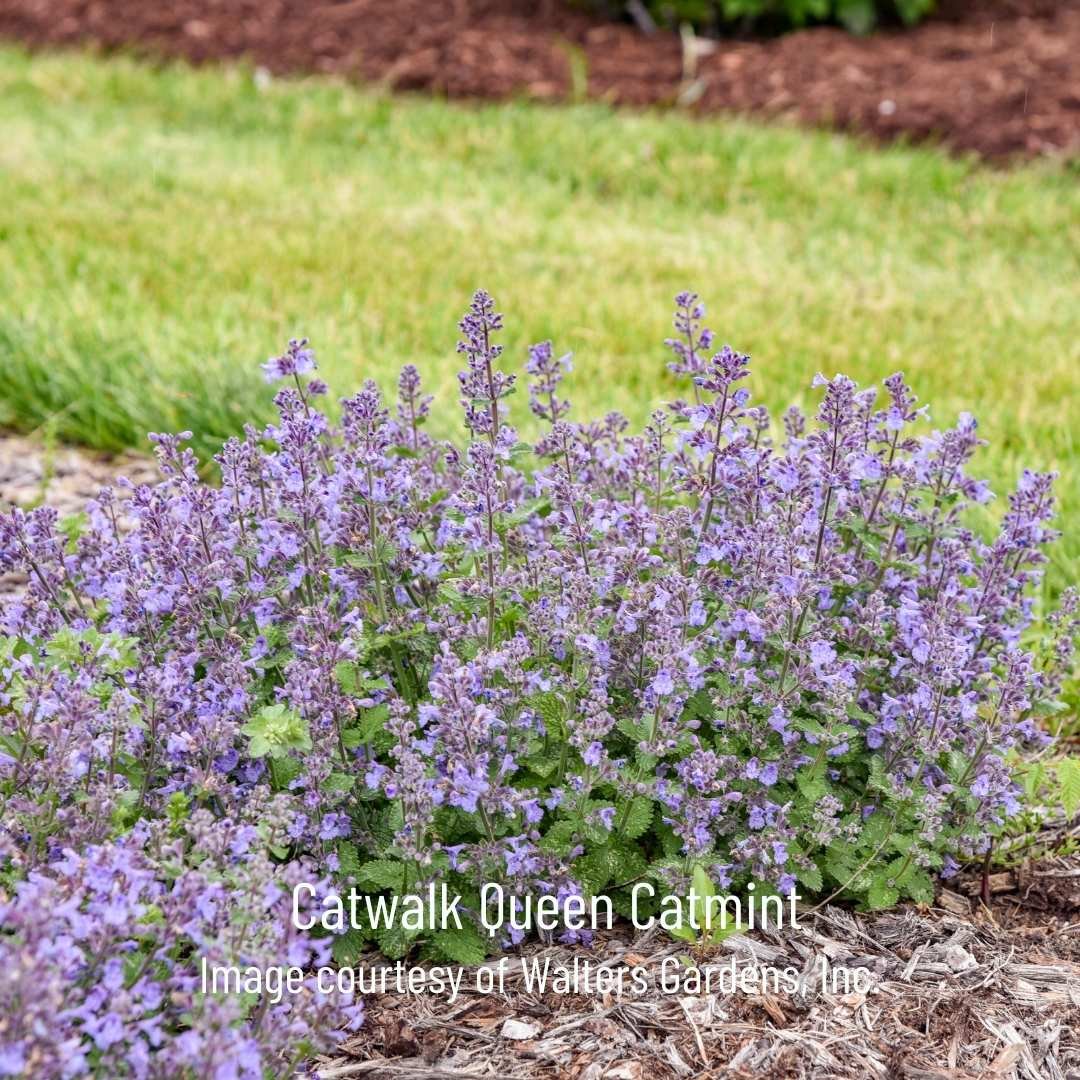Catmint vs Russian Sage: A Complete Comparison for Gardeners
Wondering whether to plant catmint or Russian sage? Discover how these two perennials compare in looks, care, and landscaping performance.
When planning a garden with long-lasting color and low maintenance, it’s natural to compare catmint vs. Russian sage.
Both are beloved for their silvery green foliage, purple blooms and ease of care, but they differ in several key ways.
In this article, we’ll explore the characteristics and landscaping uses of each plant, including appearance, light requirements, size, flower color, and how they each fit into different garden designs.
When you're deciding between catmint or Russian sage, this guide will help you make the right choice for your landscape.
And keep scrolling for a gallery of photos showcasing popular cultivars of both catmint and Russian sage to help you visualize your options!
Catmint vs. Russian Sage: Appearance
At first glance, catmint and Russian sage look alike with their silvery-green foliage and purple flower spikes, but a closer look reveals their distinct differences.
Catmint (Nepeta species) grows in low, dense, mounded clumps with foliage that's slightly greener and less silvery than Russian sage.
When in bloom, catmint is covered with abundant flower spikes that range in color from pale lavender to deep bluish-purple, and some cultivars even have pink or white blooms.
Russian sage (Salvia yangii, formerly Perovskia atriplicifolia), on the other hand, is taller and more shrub-like in appearance, with an airy, open form.
The leaves are narrow and finely cut, with a silvery hue that catches the eye even when the plant isn’t in bloom.
Russian sage produces clouds of small, tubular lavender-blue flowers that create a hazy, ethereal effect in the garden, especially when planted in masses.
If you're deciding between catmint or Russian sage based on looks, consider whether you prefer the tidy mounds and dense spiky blooms of catmint or the upright, airy form and shimmering silvery hues of Russian sage.
Russian sage, once known as Perovskia atriplicifolia, now goes by its new botanical name Salvia yangii. Don’t be surprised if the old name sticks around, especially at garden centers and nurseries.
Read more about the name change in Longwood Garden’s “Name of the Botanical Game” article.
Catmint vs. Russian Sage: Flowers and Leaves
FLOWERS
Catmint produces small, tubular flowers arranged in spiky clusters. Flower color varies by cultivar and ranges from lavender to bluish-purple, white or light pink. Catmint flowers from spring through summer, and shearing back when the first round fades will encourage a second flush of blooms.
Russian sage has tubular flowers as well, but they are tiered along airy, branched panicles, creating a more open, cloud-like effect. Blooming from mid-summer through fall, the flowers come in lavender to bluish-purple hues and they hold up well in hot, dry conditions.
LEAVES
Catmint has green to silvery gray leaves with a soft, downy texture. Leaves are oppositely arranged along square stems and release a minty fragrance when brushed against or crushed. Catmint belongs to the mint plant family (Lamiaceae).
Russian sage also has opposite leaves, but they are narrow, finely serrated, and have a lacy, silvery appearance. They bring an open, airy and textured look to garden beds and landscapes. The foliage releases a strong, menthol type scent when crushed. Russian sage also belongs to the mint plant family, Lamiaceae.
Catmint vs. Russian Sage: Type
Catmint is a perennial, meaning it comes back every spring. In winter, the top growth dies back, but the roots stay alive and send up fresh shoots each year in the spring time.
Russian sage is a subshrub, and maintains woody stems at the base throughout the year. These woody stems send up new growth each spring, and give the plant a more structured, shrub-like appearance.
For a soft, low-growing mounded shape, choose catmint; for an upright, airy and spiky look, go with Russian sage.
Catmint vs. Russian Sage: Care
Native Range: Catmint is native to parts of Europe, Asia, the Middle East, and Africa. In the wild, it typically grows in dry, rocky hillsides and meadows, thriving in poor soils where other plants struggle. Russian Sage, despite the name, hails from the steppes of Central Asia - Afghanistan, Pakistan, Tibet, and the Himalayas. It’s well-adapted to arid, open landscapes with intense sun and poor soils.
USDA Hardiness Zones: Catmint is hardy in zones 3–8, and Russian sage is slightly more heat-tolerant and less cold-hardy, growing in zones 5–9. Not sure what gardening zone you are in? Check out the USDA’s Plant Hardiness Zone Map.
Light Requirements: Catmint prefers full sun and will tolerate part shade, though flowering may be diminished. Russian sage requires full sun for best growth and flowering. It gets floppy and flowers sparsely when it receives less than 6 hours of direct sunlight daily.
Soil Needs: Catmint and Russian sage both thrive in loam or sandy soil, and good drainage is essential. Both plants will tolerate clay soil, but it absolutely must be well-draining! Amend heavy or compacted clay soils with organic matter or sand to improve drainage and prevent root rot.
Watering After Planting: When first planted, both catmint and Russian sage will need supplemental watering to help them develop strong root systems. Water deeply and allow the soil to dry between waterings. Read “How to Water Your Plants” for watering tips and strategies.
Watering After Establishment: Once established, both catmint and Russian sage are highly drought-tolerant. Overwatering can cause root rot or lanky growth, especially in Russian sage. Are you in a drought? Check the US Drought Monitor Map.
Catmint vs. Russian Sage: Wildlife Value
Both catmint and Russian sage have nectar-rich flowers that attract a wide variety of beneficial pollinators, including butterflies, bees and hummingbirds. Russian sage is a particular favorite of bumblebees - the plant buzzes with activity during peak flowering!
Deer and rabbits find the aromatic, pungent foliage of both catmint and Russian sage unappealing, and both are considered to be deer resistant.
Rutgers University rates both as “rarely damaged” on their List of Landscape Plants Rated by Deer Resistance. That’s the highest deer-resistant rating on their scale!
But keep in mind that no plant is 100% deer proof. When food is scarce, hungry deer will eat almost anything, including plants they typically avoid.
While a few cats may show interest in catmint, it’s not true catnip (Nepeta cataria) and it doesn’t attract hoards of cats and send them into a frenzy. Russian sage holds no appeal for cats at all.
Catmint vs. Russian Sage: Size
Catmint Sizes
Catmint comes in a wide range of cultivated varieties, offering flexibility for gardens of all sizes.
Dwarf selections like ‘Catwalk Queen’ stay compact, growing just 10-12 inches tall.
Mid-sized varieties such as the popular ‘Walker’s Low’ or ‘Purrsian Blue’ grow up to 30 inches tall and wide, forming soft, flowing mounds.
The taller ‘Six Hills Giant’ grows 3 feet tall and 3-4 feet wide, adding bold structure and color to mixed borders.
Russian Sage Sizes
Russian sage is generally much taller, with the straight species reaching 3-4 feet tall and 2-4 feet wide.
Of the cultivated varieties of Russian sage, their are a few small selections available like ‘Lacey Blue’, which grows 12-18 inches tall and 36 inches wide, and ‘Little Spire’, which grows 18-24 inches high and wide.
For larger gardens and landscapes, the popular ‘Denim’n’Lace’ and ‘Blue Jean Baby’ varieties grow up to 3 feet tall and wide.
Scroll down to explore a gallery of popular catmint and Russian sage cultivars, perfect for getting a visual feel for the varieties that might suit your garden the best.
Catmint vs. Russian Sage: Landscaping Uses
🌿 Similar Landscaping Uses:
Pollinator gardens - Both plants attract loads of bees, butterflies, and hummingbirds to the pollinator garden.
Deer and Rabbit Resistant borders - Russian sage and catmint both have aromatic, pungent foliage that deer and rabbits tend to avoid.
Drought-tolerant plantings - Both plants are drought tolerant once established and thrive in low-water situations.
Cottage-style or informal borders - The soft, silvery green textures and long bloom times of catmint and Russian sage are well-suited to these relaxed design styles.
Mass plantings or drifts - Both catmint and Russian sage look stunning when planted in large quantities for maximum visual effect.
Perennial Pairings - Both pair well with other sun-loving perennials like coneflowers, salvia, hummingbird mint, yarrow, lavender, and rosemary.
Rose Planting Companion - Russian sage and catmint are each lovely planting companions for roses.
🌿 Catmint-specific Uses:
Edging paths or garden beds - Compact, mounded varieties like ‘Catwalk Queen’ are ideal for lining walkways.
Container plantings - Smaller cultivars like ‘Cat’s Pajamas’ work well in pots or raised beds.
Low-growing groundcover - Dense, spreading growth can suppress weeds in sunny spots.
More formal gardens - The tidy, mounded growth of catmint fits neatly into structured layouts and looks particularly nice when combined with small-leaved evergreens like Boxwoods or Steeds Hollies.
🌿 Russian Sage-specific Uses:
Vertical accent or backdrop - The tall, airy stems of Russian sage add height and movement to borders.
Focal point - Russian sage is big and bold enough to serve as a central feature or focal point in a garden bed.
Late-season interest - Russian sage blooms late into fall, extending color in the garden and feeding pollinators at a critical time of the year. It combines well with other late flowering plants like Sedum ‘Autumn Joy’ and ‘Fireworks’ Goldenrod.
Wind-tolerant, open-site planting - The upright habit and tough nature of Russian sage suit breezy, exposed areas and coastal locations.
Slideshow: Catmint Varieties








Slideshow: Russian Sage Varieties













